We have compiled a list of six of the most significant royal palaces in Britain that are open to visitors, offering a fascinating glimpse into the opulent halls and exquisite gardens of the British monarchy.
As far as property ownership goes, the British monarch and his consort are quite fortunate. The newly-crowned King Charles III has a choice of over twenty palaces, castles, and country houses to reside in, some of which are privately owned.
Windsor: the beloved family home
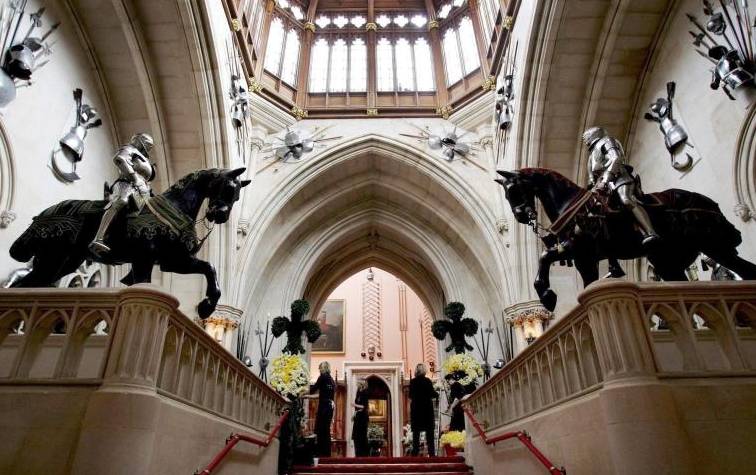
To truly comprehend the British royal family and gain insight into Charles, a visit to Windsor is a must. The castle, which can be toured year-round, is the unequivocal favorite of the royals and is situated west of London, enclosed by towering walls. Not only does the family name originate from this location, but it also holds significant historical and cultural importance. During World War I, the name was altered from the German Sachsen-Coburg and Gotha to the English Windsor for political reasons.
Windsor is not only a special place for Charles because of its historical significance but also because it’s where his close family members are buried. Charles’ grandparents, George VI and Elizabeth (the Queen Mother), his aunt Margaret, and his parents, Queen Elizabeth II and Prince Philip, are all buried here. Even the notorious Henry VIII, who had six marriages, was laid to rest at Windsor. One of his custom-made armors is still on display, showing a noticeable bulge in the front, indicating that Henry had a sizeable belly.
Believed to be the oldest continually inhabited castle in the world, Windsor Castle has stood since 1078. Its state rooms are meticulously preserved, featuring exquisite tapestries and paintings by notable artists such as van Dyck, Brueghel, and Dürer. Lavish four-poster beds grace the bedrooms, but according to Tina Brown’s book The Palace Papers, 74-year-old Charles prefers an orthopedic bed. Unfortunately, visitors on the tours do not get to see the private chambers in the family residence or other castles, but they can explore many other halls and rooms.
Despite being situated in the flight path of Europe’s largest airport, Heathrow, Windsor remains a favorite residence of Charles and his family. The noise from the jets does not deter them from spending a significant amount of time there, with the king staying for about a third of the year, mostly on weekends. However, there are occasional disputes among the royals about who gets to live where, which is ultimately decided by the monarch, now Charles.
Prince Andrew has been affected by the shift in power as he has to leave the opulent Royal Lodge and move into the smaller Frogmore Cottage. The British media sniggered at his “downsizing”, while the New York Post reported that Prince Andrew was offended. Now the question is, who will take up residence at the luxurious lodge? It’s none other than William and Kate!
Before his mother’s passing, Charles made sure to secure the apartment with the best view in the Lancaster Tower of the main building at Windsor Castle. Its windows overlook the 10-mile expanse of Windsor Great Park. In contrast, Elizabeth II was content with a corner tower that did not offer any particular view.
If you happen to be fortunate enough, you may witness the arrival of the king in a black carriage during your visit to Windsor Castle. The likelihood of this happening is highest on Fridays. Following the arrival, a servant rushes to the large round tower to retrieve the Union Jack and raise the royal flag, indicating the presence of the monarch.
When the monarch arrives at Windsor Castle, the Lancaster apartment’s windows are opened to let in fresh air, as Charles is fond of it. This is a clear sign of his arrival, as are the servants running around to fetch the Union Jack and hoist the royal flag on the large round tower. On top of that, a white panel van with a small crown logo behind the windshield always follows the king’s convoy, carrying his personal items that he uses while travelling from one house to another.
Windsor exudes the charm of an old-fashioned village, reminiscent of a scene from a Miss Marple movie: quaint half-timbered houses, winding alleys, and two small Victorian train stations. Graceful white swans glide along the tranquil Thames, their necks held high with a regal air. Across the river lies Eton College.
Another noteworthy attraction is a restroom that was built for Queen Victoria in the 19th century at the Windsor and Eton Central train station. The Queen had a waiting room constructed for her personal use, and today it has been converted into a bar. The washbasin and toilet that were installed for her use remain in a front room, but visitors cannot use them due to a glass wall that now surrounds them. The sign outside the restroom reads: “Her Royal Highness Queen Victoria’s Water Closet”, adding a touch of English solemnity to the experience.
Buckingham Palace: the stone colossus
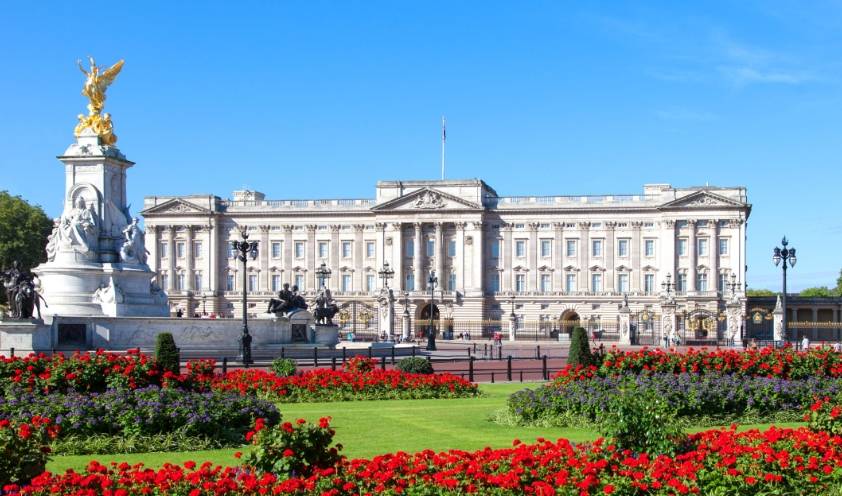
In addition to having waiting rooms built, the petite Queen Victoria – who measured only 1.57 meters – also converted the Duke of Buckingham’s London townhouse into the seat of the monarchy in 1837. The palace’s location near Parliament and the parade grounds is advantageous, but in terms of livability, the square building with its 775 rooms (compared to the White House’s mere 132) appears to fall short.
Queen Elizabeth had never been a fan of the huge block, and her son Charles shares the same sentiment. Buckingham Palace is currently under renovation, which serves as a convenient reason for the new king to avoid spending time there. If the renovation takes the expected ten years to complete, it’s possible that Charles may choose not to reside in the palace at all, and instead use it solely as an administrative center and tourist destination.
The Changing of the Guard Square is a popular attraction for tourists in London, but the gardens, stables, and interiors of Buckingham Palace are also worth visiting. Despite ongoing renovations, the state rooms are open to visitors for most of the year (except at the end of May and mid-July). The Marble Hall, Purple Hall, White Hall, Throne Hall, and especially the nearly 50-meter-long gallery featuring works by Canaletto, Vermeer, and Rembrandt, are even more impressive than those at Windsor Castle. The 2012 Olympic Games film offers a glimpse of the gallery, where James Bond walks with the Queen and her corgis.
If you plan to visit the palace, it is highly recommended that you book your tickets online in advance as they tend to sell out quickly. The palace was only opened to the public in 1993, prior to that, it was exclusively reserved for invited guests. The reason behind this was the financial constraints faced by Queen Elizabeth. Last year, Windsor Castle was ravaged by a major fire, and to fund its restoration, the Queen opened it up for admission.
Clarence House and Kensington Palace: secondary residences
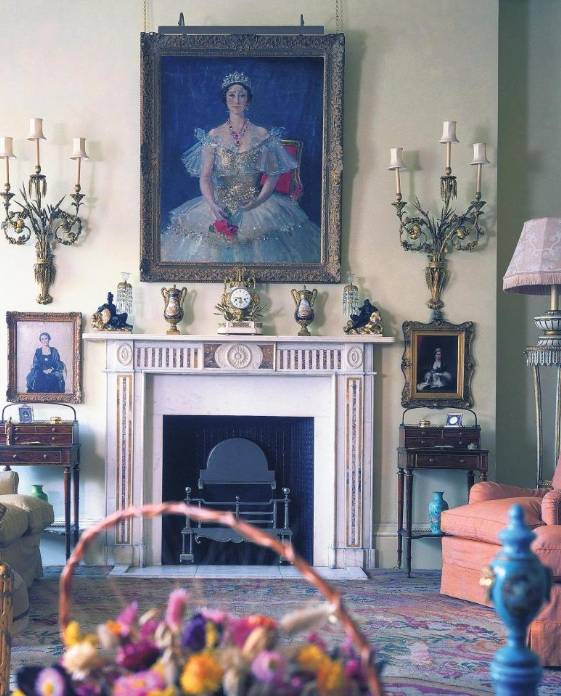
In case Charles isn’t staying at Buckingham Palace in London, he stays at Clarence House, which is located 400 meters down the boulevard Mall. Charles hired London interior designer Robert Kime to refurbish Clarence House. The four-storey building, which he moved into as heir to the throne, is surrounded by high fences and looks more like the exile residence of a wealthy oligarch. However, the chic wallpapers, rich fabrics, and sofas with lots of cushions provide a cozy ambiance that the grand palace lacks. In the garden, the Queen Mother often hosted lunch parties under the tall trees. Clarence House is usually open to visitors during the summer months.
Located on the western edge of Hyde Park, half an hour away by car or tube, is Kensington Palace, where Charles lived with his first wife Diana until they separated. This year, Kensington has something special to offer visitors: the “Crown to Couture” exhibition, which runs until October 24, showcases historical royal corsets and dresses, as well as the impressive gala robes of contemporary world stars like Lady Gaga and Beyoncé.
Balmoral: the vacation home
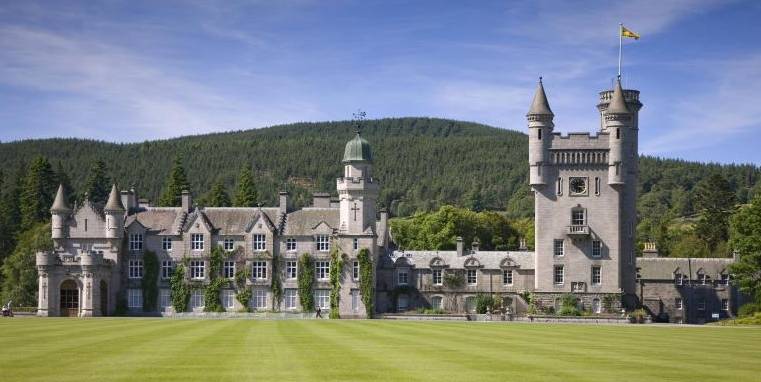
According to a game warden, Charles often visits Balmoral, the royal family’s private country estate in Scotland, despite the official residence being reserved only for the summer. He prefers to stay at the slate-covered Birkhall country house instead of the castle with its checkered curtains and mismatched furniture. While Birkhall is not open to tourists, some rooms in the palace itself can be visited from April to mid-August.
One can enjoy hunting trips in the Highlands, leisurely walks to the remote Loch Muick, fishing on the River Dee, and attending the Crathie Village Church on Sundays. Dressing in rubber boots and waxed rain jackets is the norm. Instead of a crown, the Queen wears a headscarf.
Queen Elizabeth’s mother, the Queen Mother, used to surprise her neighbors with unannounced visits at Balmoral, where she would invite herself in for a cup of tea. However, there is no evidence that Prince Charles and Camilla do the same. As for Camilla, she may not have the fondest memories of Balmoral as she was not allowed to visit until after her marriage to Prince Charles. Queen Elizabeth had not received her there for many years.
Highgrove House: the eco-oasis
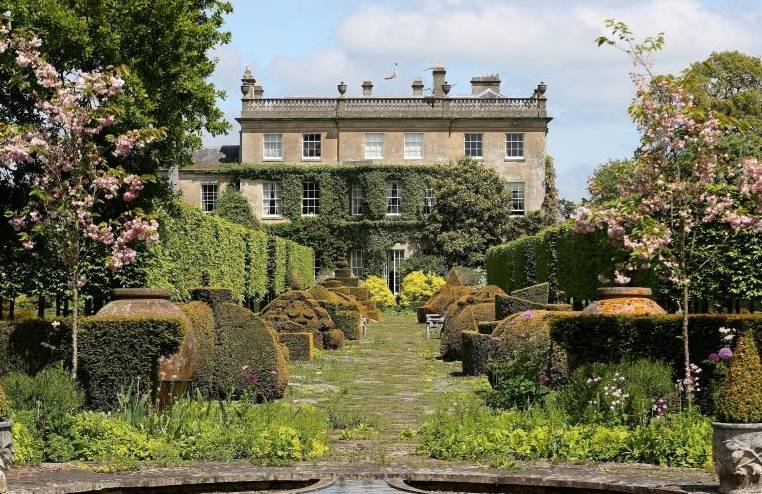
Highgrove House, Charles’ private country estate, is located near Tetbury in western England, about two hours’ drive from Buckingham Palace. The estate’s stunning gardens can be explored on guided tours from April to October.
Camilla also happens to own a house nearby, but whether it is a coincidence or not is unclear. In 1980, Charles purchased the enormous property in Gloucestershire for £865,000 (equivalent to $4 million today). It has turned out to be a good investment as Forbes magazine now estimates its value to have increased tenfold.
This is where Charles first experimented with talking to his plants, and also introduced organic farming long before it became popular in the kingdom. He also made a significant profit with his “Duchy Originals” line of organic biscuits, which are even sold by some supermarket chains. The proceeds from the sales go towards the king’s various charitable initiatives.
During the guided tours of Highgrove House’s magnificent gardens, visitors can explore the cottage gardens and wildflower meadows. In the arboretum, one can admire a variety of trees, including maples, beeches, cherry trees, and Charles’ favourite: magnolias. In addition, visitors can book a thyme walking tour or a champagne tea tour to enjoy a unique experience.
Surrounded by lush green gardens, the late 18th-century country house is decorated by Robert Kime, the same interior designer who furnished Clarence House. Charles also personally helps in keeping things organized, which annoys Camilla as she claims she is “not allowed to touch anything”. Although she lives with him, she finds Highgrove “too small” and too much of Charles’ personality. Despite that, Highgrove is the most personal home of all the residences owned by Charles.



